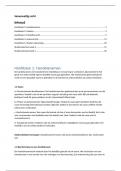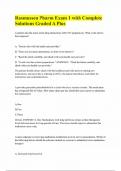Samenvatting
Summary Social Science Part for Principles of Environmental Sciences
The Lectures of Dr. Kris van Koppen are summarized in this document. 1 Lecture roughly has 5 pages, including key concepts for each lecture and class notes. Including table of content and graphs. 7 Lectures in total.
[Meer zien]













